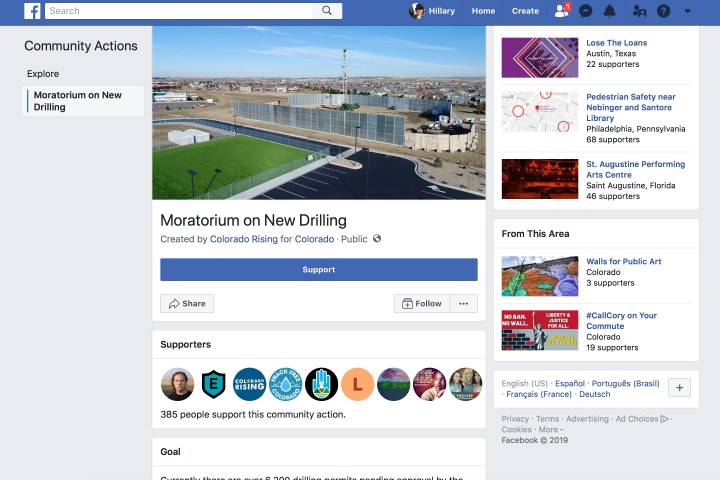
Want to push a need for change in front of local politicians? Beginning today, January 21, Facebook will offer users a platform to create and sign petitions — and tag relevant politicians. Called Community Actions, the feature allows users to create, support, and share online petitions.
Inside the new Community Actions, users can create their own petition or find a cause to support. If a friend shares a petition, the Community Action will also pop up in News Feeds. Users can also tag a politician or government agency to send a notification about the petition.
The petition page also allows users to add posts or to follow the petition (without clicking the support button). Unlike reactions on news posts, there’s no way to dislike a petition outside of writing out a comment or creating an opposite campaign. Users can see how many people have signed the petition. While the list won’t include all the names, Facebook will display the names of those on your friends list as well as any public accounts supporting the cause.
The feature is largely designed for local and state issues. Relevant to that focus, Facebook won’t allow users to tag President Donald Trump or Vice President Mike Pence.
On one hand, the move creates a change.org-like platform that doesn’t require a new sign up to support an issue. Building a petition option on an existing social platform, and one that already includes an option to contact elected officials, could put local issues in front of representatives and allow them to see how many people supported the cause.
But users only have to look at Facebook’s past to see the possibilities for how the feature could potentially do more harm than good. The petitions are joining a platform that has inadvertently promoted fake news in the trending topics. The social network’s moderation algorithms and staff have been previously criticized for allowing some posts and for removing others, which could potentially be repeated in the new format. Facebook is also continuing to find and remove fake accounts from Russia, some of which share political-leaning posts.
Facebook says the new tool will be moderated using algorithms, human staff, and user flagging. The network categorizes the feature alongside tools for creating fundraisers or contacting government officials as an option for advocating for a specific cause. Users can see current Community Actions or create their own from the Community Action Page.
Editors' Recommendations
- What is a Facebook Pixel? Meta’s tracking tool, explained
- Facebook says iOS 14’s new privacy tools could harm its ad business
- WhatsApp: Facebook shelves plan to fill app with ads, report claims
- With its latest tool, Facebook is out for blood (donations, that is)


